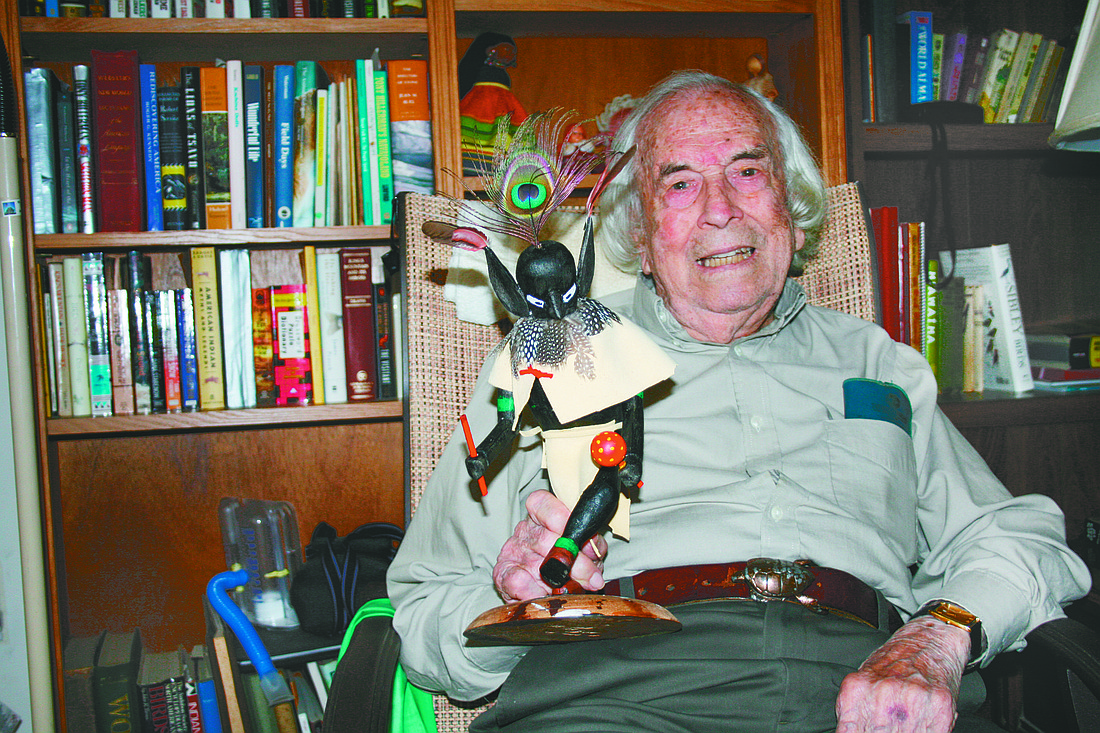- May 7, 2025
-
-
Loading

Loading

For 35 years, Orville Clayton walked six miles on the beach nearly every day before dawn for six months out of the year in search of turtle nests. He was usually the only man on the morning walks, surrounded by a group of women that often included his wife, Vonda.
He forged lasting friendships with many of his fellow volunteers, but he never forgot his purpose in traversing the beach. When his fellow walkers became overly chatty, he reminded them of their purpose.
“Hey girls,” he would say. “Look for those tracks.”
He taught many veteran Turtle Watchers how to search for nests and mark them and to stay on top of the latest research. He never brought a notebook to the beach, relying on his keen memory to recall nest locations and data at the end of each walk.
“He was always interested in getting things right, no matter how difficult it was,” said Virginia Sanders, a longtime Turtle Watch volunteer and former Longboat Observer Turtle Watch columnist. “He guarded those turtles like they were his children.”
Clayton, a founding member of Turtle Watch who was affectionately known among members as “Top Turtle,” died Sept. 4. He was 99.
He began tracking turtles with a group of volunteers in 1969, before Longboat Key Turtle Watch became an official organization, and helped lobby the town to pass one of the first turtle-lighting ordinances in Florida.
Freda Perrotta, who joined the Turtle Watch 20 years ago, described Clayton as a mentor and father-like figure, even though he was just 11 years older than she.
“When they started this, nobody knew anything about how to protect turtles, she said.
Born June 22, 1915, Clayton lived in upstate New York and earned a degree in zoology from the University of Syracuse. But severe allergies prevented him from doing fieldwork, so he worked as a milkman, although he remained an avid outdoorsman.
In 1967, Clayton and his wife, Vonda, moved to Longboat Key, and in 1969, Kit Fernald, a future Longboat Key mayor, told the Claytons a turtle nest was due to hatch and invited them to watch. It didn’t hatch that night, but the following night it did.
“It was such a thrill,” Clayton told the Longboat Observer in 2009. “That’s when I became interested in turtles.”
Shortly after, Clayton became part of an informal group of four volunteers who searched the beach for turtle nests each morning. They would become the Longboat Key Turtle Watch later that year. It was one of the first turtle-watching groups in Florida; its permit number was No. 11. He went on to help Mote Marine Laboratory establish its sea turtle conservation program in the early 1980s.
Clayton also worked to change town policies. In addition to the lobbying for the town’s lighting ordinance, he worked to get fires banned on the beach — in part because beachgoers often burned the wooden stakes turtle watchers use.
In those days, both volunteers and officials knew little about turtles. The Department of Natural Resources told the Turtle Watch in 1970 to guide baby turtles into the water using lights. Now, it’s widely known that lights cause hatchlings to become disoriented.
“The procedures and all of the methods have changed drastically,” said 30-year Turtle Watch member Connie Schindewolf. “He taught me to follow the research and to always follow the guidelines of whomever was in charge.”
Schindewolf got involved with Turtle Watch because she became curious about the man — Clayton — she saw on the beach with a backpack and shovel because back then, volunteers dug nests with shovels, placed them in plastic containers and let them hatch on their lanais.
But while the practice was convenient for volunteers and helped them protect turtles from predators, further research showed that temperature determines hatchlings’ sexes. In the controlled conditions of lanais, Turtle Watchers were likely yielding hatchlings that were all of the same sex each season, and the practice of relocating nests to lanais was banned.
Clayton, who brought a scientist’s eye to his volunteer work, urged volunteers to follow the new protocol.
“Everybody was really upset because it was fun, and they saw what a successful hatch rate they had, and you could protect them from the predators. But it probably wasn’t healthy for the overall population,” Schindewolf said.
Clayton, who had a passion for woodcarving as well as turtles, moved off the Key in 2003 to Westminster Manor in Bradenton. Still, he maintained his interest in turtles by studying the latest research in journals — and maintaining the friendships he met through Turtle Watch who remember the lessons he taught them.
“He taught us about life — to be good, to be kind, to be caring to nature and each other,” Perrotta said. “His whole attitude about life was that we do good for each other.”
Clayton was preceded in death by his wife of 72 years, Vonda. He is survived by his son, David Clayton, of Rotonda West.